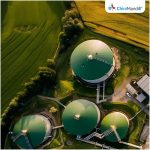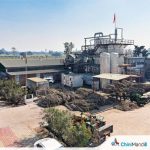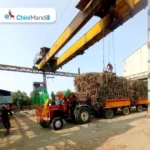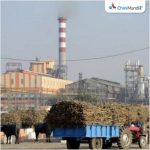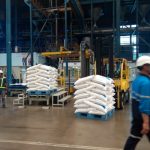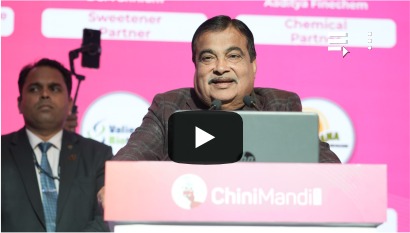The Food Secretary in his address at the New York Sugar and Ethanol Conference spoke about the Government’s commitment towards achieving sustainability in sugarcane production. He said that they are working closely with the industry and industry body- ISMA to improve sugarcane yield and sugar recovery.
To understand the nature of the collaboration and synergies involved between the Government and industry, ChiniMandi spoke exclusively to Deepak Ballani, DG, Indian Sugar and Bio-energy Manufacturers Association (ISMA). Ballani said that the primary objective revolves around increasing cane yield from the current level of approximately 76 tons per hectare to a targeted yield of around 83 tons per hectare. To ensure this, a lot of work is being done, including the establishment of a dedicated task force and a detailed budget allocation for strategic investments in sugarcane agriculture.
He is hopeful regarding an upward revision of sugar MSP and says that if the Government allows sugar export of 20 lakh tons, it will support the financial liquidity of sugar mills, facilitating prompt payments to farmers.
Q. At the New York Sugar and Ethanol Conference, the Food Secretary said that DFPD is working closely with ISMA to improve sugarcane yield and sugar recovery. Kindly elaborate on the work that is being done by ISMA to ensure sugar production becomes more sustainable in the future.
Ans – ISMA has undertaken significant efforts to enhance the sustainability of sugar production, particularly in collaboration with DFPD. At the New York Sugar and Ethanol Conference, the Food Secretary highlighted the partnership between DFPD and ISMA which is aimed at improving sugarcane yield and sugar recovery.
To achieve this, ISMA has proposed several initiatives to stabilise cane production for sustainable achievement of Ethanol Blended Petrol (EBP) targets within the sugar industry. One key proposal involves the establishment of a task force dedicated to these efforts, supported by a detailed budget allocation for strategic investments in sugarcane agriculture. These investments cover essential areas such as drip irrigation, watershed development, mechanisation, and trash shredding/mulching, all in line with existing Government agricultural schemes.
Recognising the importance of these initiatives, DFPD, under the Ministry of Consumer Affairs, Food and Public Distribution, has responded positively. They have facilitated joint inter-ministerial meetings involving key stakeholders like the Ministry of Agriculture. These collaborative efforts provide a platform for discussing and deliberating upon ISMA’s proposals, fostering a coordinated approach to sustainable sugar production.
Q. The Food Secretary said that it is imperative that sugar mills have to adopt sustainable farming practices to improve yield, with an emphasis on water-efficient techniques. As an apex Association of the private sugar mills in the country, what steps are being taken by ISMA in this space?
Ans- ISMA, as the apex association of private sugar mills, is actively addressing the adoption of sustainable farming practices, as highlighted by the Food Secretary. We recognise the urgent need to improve cane yield, particularly through water-efficient techniques. To this end, we have initiated several proactive measures in collaboration with the Government. Presently, a robust dialogue is underway between ISMA and the Government to explore avenues for enhancing existing Government schemes tailored to support the sugarcane sector. Moreover, there is a focused effort on implementing drip irrigation systems widely, following a ‘cluster’ approach facilitated by State Governments. ISMA plays a pivotal role in supporting the Government in formulating a comprehensive ‘National Mission on Sugarcane’ (NMS), incorporating valuable insights and recommendations from both stakeholders.
Our primary objective revolves around increasing cane yield, aiming to raise it from the current level of approximately 76 tons per hectare to a targeted yield of around 83 tons per hectare. This ambitious target underscores our dedication to promoting sustainability and resilience within the sugarcane industry, thereby aligning with the broader national objectives of energy security and environmental sustainability.
Q. Are you hopeful of an upward revision of sugar MSP soon? What should be the new sugar MSP that will sufficiently safeguard the interest of the industry?
Ans- Yes, there is optimism regarding a potential upward revision of sugar MSP. The Government is deliberating on this matter, which is currently under discussion within our Advisory committee. We anticipate that a revised MSP will be established to adequately safeguard the interests of the sugar industry.
Q. In the latest report, ISMA expects sugar production at 320 lakh tons for the current year and closing stock at 91 lakh tons, almost 30 lakh tons higher than the normative stock. How will this impact the financial condition of the sugar mills, if the excess stock is not consumed?
Ans- The surplus closing stock poses a challenge to the financial health of sugar mills, tying up crucial working capital. With expectations of a moderate crushing season in 2024-25, ISMA has urged the Government to permit exports of 20 lakh tons this year. If sugar exports are allowed, it would ensure a balanced stock for domestic use and sustain the Ethanol Blending Program (EBP) and support the financial liquidity of sugar mills, facilitating prompt payments to farmers.
Q. The country has achieved around 12% ethanol blending in the current ESY, but the initial target is 15% ethanol blending. What should be done to increase ethanol blending in the current season?
Ans- The current ethanol blending rate has reached approximately 12%, falling short of the initial target of 15%. This shortfall can be attributed to restrictions placed on the use of Juice/B heavy molasses for ethanol production by a Government order dated 7th December 2023, which has had a detrimental effect on blending percentages.
To bridge this gap and achieve the targeted blending rate, ISMA has proposed several initiatives to stabilise cane production for sustainable achievement of Ethanol Blended Petrol (EBP) targets within the sugar industry.
One key proposal involves the establishment of a task force dedicated to these efforts. The details of which are already discussed above.
Q. What will be ISMA’s top 3 wish-lists for the new Government?
Ans- We want the new Government to give priority to some of the long-standing demands of the industry. The Government must revise sugar MSP upward and align it with the Fair and Remunerative Price (FRP) of sugarcane.
At the beginning of the ongoing ESY, there was no revision of ethanol procurement prices and the prices have remained static, whereas the cost of production of ethanol has increased. Keeping this in mind, we would request the Government to revise the ethanol procurement prices for various feedstocks used to produce ethanol, to reflect in the FRP of sugarcane.
Our third wish-list would be the implementation of the National Mission on Sugarcane (NMS) to ensure stability in sugarcane production, facilitating informed decision-making by the Government.
Q. The Government is placing a lot of emphasis on Green Hydrogen, CBG etc. As an Association, what steps are you taking to encourage member factories to produce these green fuels?
Ans- ISMA is actively promoting the production of green fuels such as Green Hydrogen and Compressed Biogas (CBG) among its member factories. Collaborating with esteemed institutions like IISC, Bangalore, ISMA has conducted trials and studies for producing Green Hydrogen from bagasse, showcasing the potential of this renewable resource.
Currently, several sugar mills, approximately 10-15, have already installed CBG production plants. However, the industry faces certain challenges hindering the expansion of CBG production.
One major issue is the surplus production of Liquid Fermented Organic Manure (LFOM), a valuable by-product of CBG production, which poses a challenge in off-take. ISMA suggests mandating fertiliser companies to compulsorily procure LFOM from sugar factories to address this issue effectively.
Additionally, in the context of the SATAT scheme, there is a need for a structured mechanism to determine CBG prices for pipeline-based injection. Currently, the correlation between CNG prices and cascade-based offtake affects the CBG prices paid to producers. ISMA recommends establishing a transparent mechanism for determining CBG prices for pipeline-based injection, ensuring fair compensation for producers and assuring offtake.







